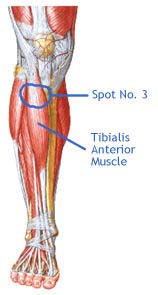Carbohydrates have long been studied as an energy source, and the debate over the optimal quantities and types of carbohydrates for performance and health is ongoing. Some carbohydrates, often referred to as 'simple' carbs, are quickly converted into glucose, raising blood sugar levels rapidly and potentially contributing to conditions like obesity, diabetes, and metabolic disorders. On the other hand, 'complex' carbohydrates are digested more slowly, providing a steady energy source and offering numerous health benefits.
Understanding the Glycemic Index
The glycemic index (GI) was developed as a tool to rank carbohydrate-containing foods based on how they affect balancing blood sugar levels. The scale ranges from 0 to 100, with pure glucose serving as the reference point at 100. High-GI foods (above 70) cause rapid spikes in blood sugar, while low-GI foods (below 55) provide a gradual, sustained release of energy.
For instance, a baked potato has a GI of around 85, meaning it raises blood glucose nearly as much as pure sugar. Conversely, grapefruit, with a GI of 25, has a much milder effect on blood sugar levels. However, GI alone does not account for realistic serving sizes, making it a limited tool for dietary planning.
The Importance of Glycemic Load
To provide a more practical measure, researchers developed the glycemic load (GL), which considers both the GI and the actual carbohydrate content of a food. GL is calculated by multiplying a food’s GI by the grams of carbohydrates in a serving, then dividing by 100.
For example, a half grapefruit (166g) contains about 11g of carbohydrates, giving it a very low GL of 3. Meanwhile, a medium-sized baked potato (173g) contains about 33g of carbohydrates, resulting in a moderate GL of 28. This distinction highlights the importance of portion size in managing blood sugar response.
Carbohydrates and Athletic Performance
For athletes, carbohydrate intake is essential for fueling workouts and optimizing recovery. High-GI foods may be beneficial immediately before or after intense exercise like HIT or HIIT training to replenish glycogen stores quickly. In contrast, low-GI foods can provide sustained energy for endurance activities and reduce post-exercise energy crashes.
Studies suggest that consuming carbohydrates with protein post-workout enhances muscle recovery and performance. A combination of complex carbs, lean proteins, and healthy fats can further stabilize blood sugar levels and promote optimal muscle function.
Carbohydrates and Weight Management
For individuals aiming to lose weight or manage diabetes, prioritizing low-GI and low-GL foods is crucial. Whole grains, legumes, vegetables, and fiber-rich fruits help maintain satiety, reduce cravings, and support metabolic health. In contrast, refined carbs, such as white bread, sugary cereals, and processed snacks, should be limited due to their tendency to trigger insulin spikes and fat storage.
Recent research has also emphasized the role of fiber in weight management. High-fiber diets slow digestion, promote gut health, and contribute to sustained weight loss. By incorporating more whole foods and reducing reliance on processed carbohydrates, individuals can better regulate their appetite and improve overall health.
Glycemic Response and Individual Variability
It's essential to recognize that individual responses to carbohydrates vary based on genetics, activity levels, insulin sensitivity, and gut microbiota. Some people may tolerate higher-GI foods without adverse effects, while others may experience significant blood sugar fluctuations.
Pairing carbohydrates with protein, fat, and fiber can further modulate glycemic response. For example, eating whole-grain toast with avocado and eggs results in a lower blood sugar spike compared to consuming white toast with jam. This highlights the importance of balanced meal composition in blood sugar regulation.
Both the glycemic index and glycemic load offer valuable insights into how carbohydrates affect the body. While the GI provides a general ranking of foods based on their impact on blood sugar, GL offers a more practical approach by considering portion sizes. For athletes, weight-conscious individuals, and those with metabolic conditions, tailoring carbohydrate intake based on these measures can optimize health, energy levels, and overall performance.
By making informed choices and focusing on nutrient-dense, fiber-rich carbohydrates, individuals can enjoy the benefits of sustained energy, improved metabolic function, and long-term overall health.
Sources:
1. Campbell, B., (n.d.). Glycemic Load vs. Glycemic Index.
2. Powers, S., & Howley, E. (2023). Exercise Physiology: Theory and Application to Fitness and Performance (10th ed.). McGraw-Hill.
3. Wong, S., & O'Reilly, J., (2023). Glycemic Index and Glycemic Load: Their Application in Health & Fitness. ACSM's Health & Fitness Journal, 27(4), 18-29.
This article is editorial in nature and does not constitute medical advice. Always consult a physician for any health-related concerns, whether psychological or physical.













